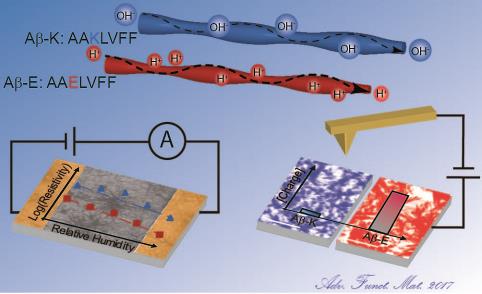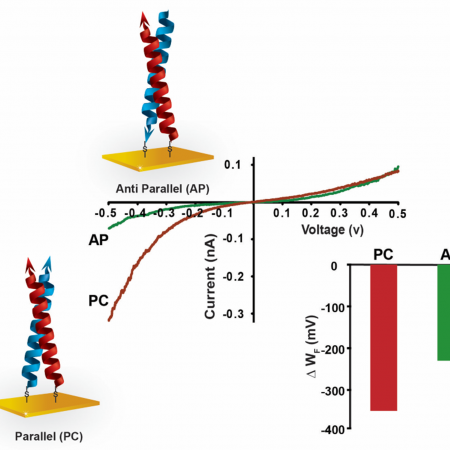
Prof. Nurit Ashkenasy - Research Group
Bio-Electronics and Bio-Sensors

Coiled coil based molecular switches
We have demonstrated that the unique propensity of proteins to undergo conformational changes, which is widely used in nature for controlling cellular functions, can be used as a mechanism to control the behavior of electronic devices. We have designed and prepared new dimeric coiled coil proteins that adopt different conformations due to parallel or anti-parallel relative orientations of their a-helix peptide monomers. In a recent publication in JACS we have shown for the first time that by controlling the conformation of these proteins, attached as monolayers to gold, a quantitative modulation of the gold electrode work function (WF) is achieved. Furthermore, charge transport through the proteins as molecular bridges was found to be controlled by the different protein conformations, producing either rectifying or Ohmic-like behavior.

The implementation of such proteins in device applications, in particular for solar energy conversion applications, will be obtained by the targeted engineering of proteins that will be functionalized specifically in order to perform the desired function and will be equipped with other units that will ensure their stable assembly in the desired device configuration.